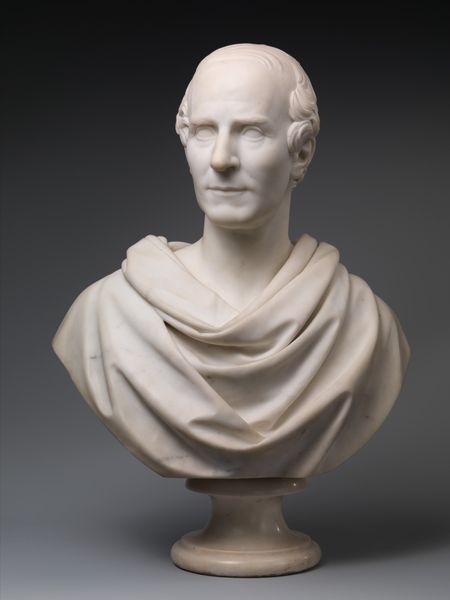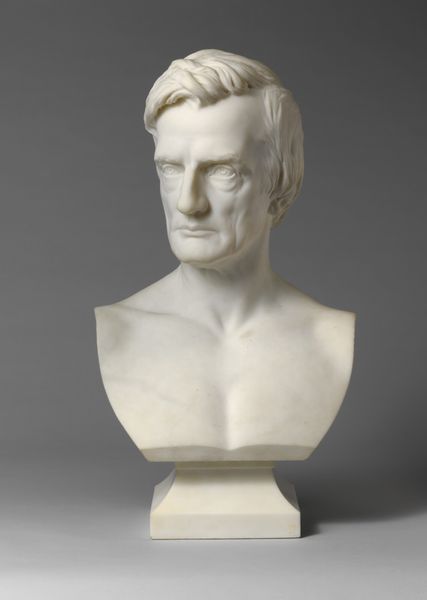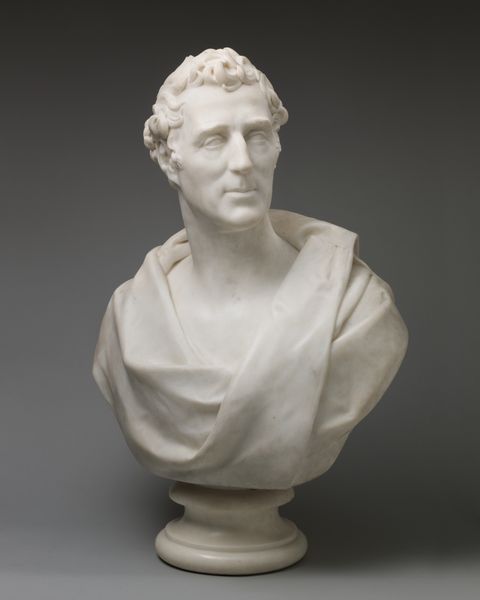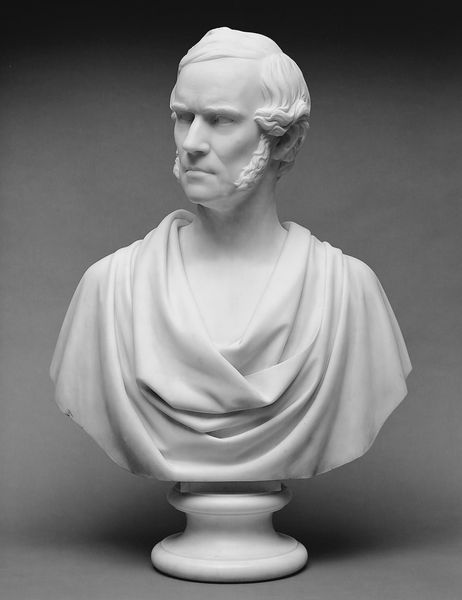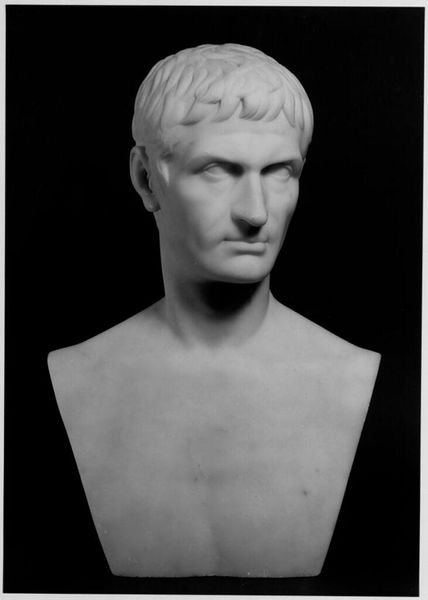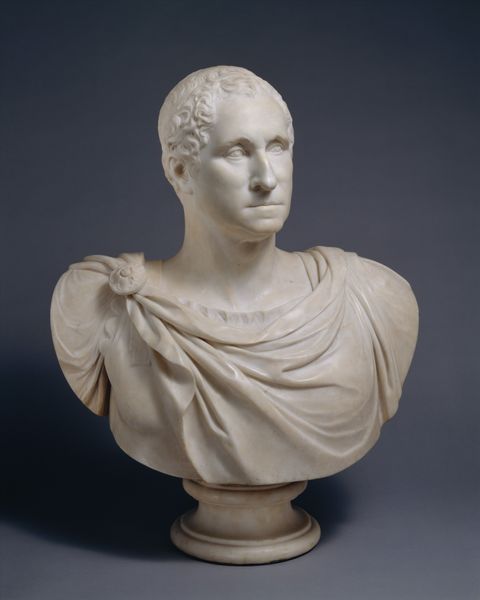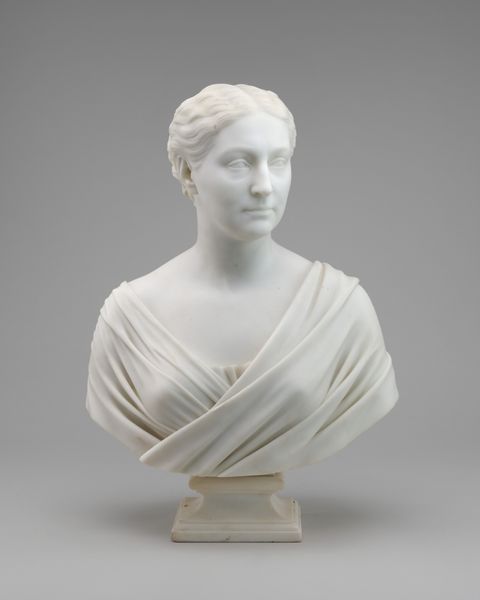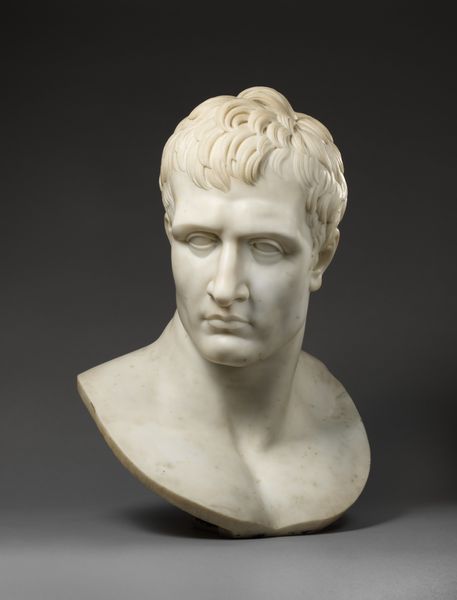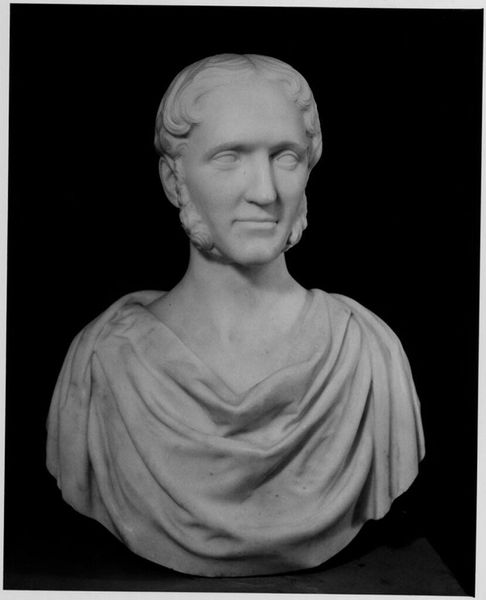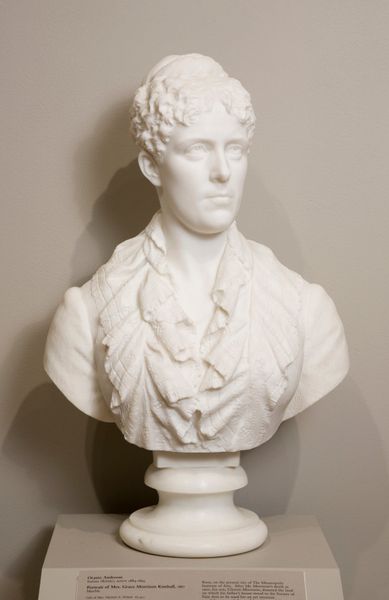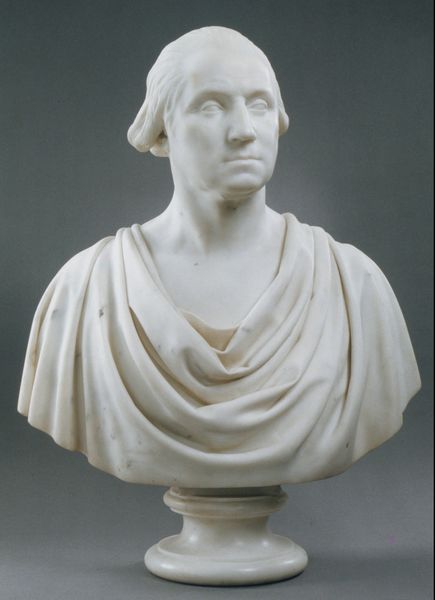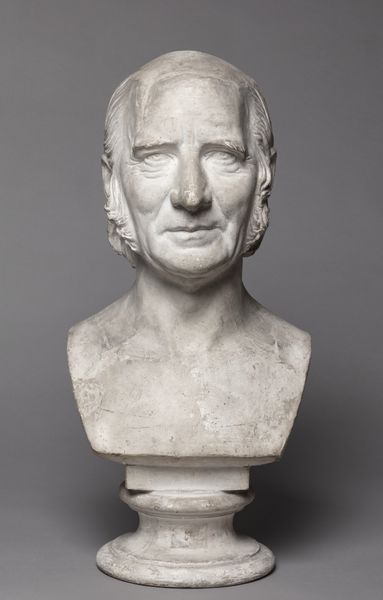
Dimensions: object: 787 x 565 x 279 mm
Copyright: CC-BY-NC-ND 4.0 DEED, Photo: Tate
Curator: Looking at this sculpture, one immediately notices the smooth, almost luminous quality of the marble. Editor: It’s a bust of Robert Vernon, created by William Behnes. The cool detachment conveyed by the marble, combined with the subject's gaze, evokes a sense of aristocratic power. Curator: Absolutely. Behnes’s choice of marble, and the sheer labor involved in carving such detail, speaks volumes about Vernon’s status and the means available for his representation. Who was he? Editor: Vernon was a prominent art collector. Busts like these were often commissioned to demonstrate the sitter’s cultural capital and solidify their place in society. Curator: It’s interesting how Behnes used material to create not just a likeness, but a symbol of class. The toga is very interesting, almost neoclassical. Editor: I think that speaks to the era’s preoccupation with aligning oneself with historical precedents of power and taste. These artistic choices underscore the complex interplay between the art market and social aspirations. Curator: Exactly. It’s a testament to how even something as seemingly simple as a bust is embedded within broader systems of production and patronage. Editor: Indeed, and thinking about the audiences this work was intended for gives us insight into how art was used to both reflect and reinforce hierarchies of taste.
Comments
Join the conversation
Join millions of artists and users on Artera today and experience the ultimate creative platform.
tate 7 months ago
⋮
In 1849 the picture dealers Paul and Dominic Colnaghi suggested that Vernon's gift to the nation should be commemmorated. It was proposed that a fund should be set up, through a public appeal, for a 'Vernon Medal', to be awarded annually to 'meritorious students' of the Royal Academy. In May 1849 Vernon sat to William Behnes, who modelled a portrait in profile for the proposed medal, as well as a bust. However, the appeal was a failure and the proposal dropped. Instead, Behnes sculpted two busts of Vernon. One went to Ardington parish church, where Vernon, by this time, was buried. The other, this one, was presented to the National Gallery. Gallery label, August 2004
